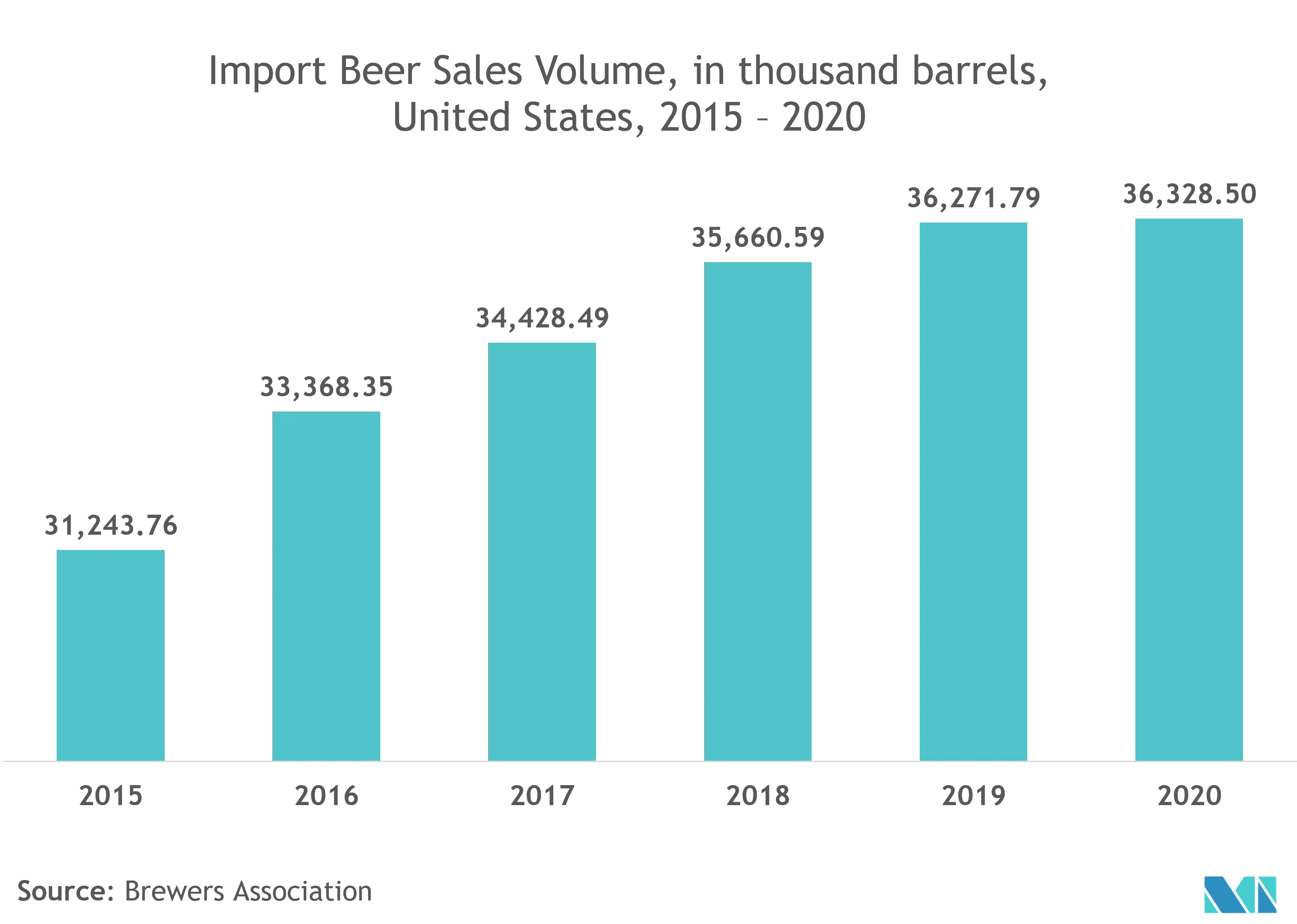Market Trends of North America Beverage Packaging Industry
This section covers the major market trends shaping the North America Beverage Packaging Market according to our research experts:
E-commerce is Expected to Drive the Market Share
- The significant share contributed by e-commerce is expected to positively impact the market as many companies have not yet optimized packaging for e-commerce, and overpacking is common while shipping products from a distribution center to a consumer. Because shipments are usually broken down into individual packages for delivery, this causes additional wastage, energy consumption, and pollution due to the increasing complexity of this retail chain.
- Moreover, Beverage packaging offers performance features, such as waterproof and lightweight materials and better dimensional weight benefits, which are attractive to e-commerce providers in the region.
- As business insider reports, e-commerce is driving retail growth virtually, and its influence on beverage packaging may develop in the region. The retail industry in the US is highly competitive due to established food retailers such as Walmart, Kroger, and Albertsons, thereby driving the growth of the country's market.
- Moreover, based out of the United States, Walmart is the largest global retailer and the largest. Five of the top 10 largest retail companies globally are based out of the United States, making the country the primary retail industry.
- Also, the demand for beverage packaging products is generally driven by millennial customers in the region, as they have an ardent preference for single-serving and on-the-go beverages. These products are generally designed to be portable, durable, and lightweight; flexible packaging stands as a famous option to pack such products.

Alcoholic Beverages Accounts For the Largest Market Share
- The categorization of alcoholic beverages includes wine, beer, spirits, etc., being packaged using formats such as bottles, kegs, cartons, and cans, to name a few. When it comes to Alcoholic beverages, there has been a significant transitioning of the wine industry concerning packaging format has been observed, as the global consumption across still wine has been slowing down. This has led the Unites States-based wineries to drive packaging innovations to cut costs and appeal to younger consumers.
- Therefore, portability and convenience became significant drivers in wine packaging innovation, leading Bota Box and Black Box to leverage alternative packagings, such as tetra packs and bag-in-box wine and cartons. According to the State Of Wine Industry Report 2020 by Silicon Valley Bank, canned wine in the country has recorded an 80% growth in 2019, despite the 0.5% as an overall share.
- Moreover, Cans have been observed increasing footprints across other alcoholic single-serve options. Here, the economies of smaller sizes remain the same for cans for 375- and 500-milliliter glass formats. For instance, small-sized bottles and cans, such as 100-200 milliliters, hold 90% of beer volume globally.
- Beer’s packaging, on the other hand, is highly diverse. The format packaging type preference has been driven by different regions where local laws, regulations, tastes, culture, and other drivers influence the packaging landscape.
- Further, with the COVID-19 outbreak and an upsurge in demand for alcoholic beverages across the United States, multiple packagers have reported running on low stocks. For instance, the draft beer sales stopped flowing in the United States due to on-premise shutdowns caused by efforts in the wake of novel coronavirus disease COVID-19. Therefore, allied craft brewers turned to 32 oz. Cans filled and sealed on demand to sell out leftover beer in kegs before oxidization. This has led to an increased demand for packaging towards current production in hand. Amidst the lockdown scenarios, packaging manufacturers have themselves reported operability with a reduced workforce, creating a supply-driven challenge.


